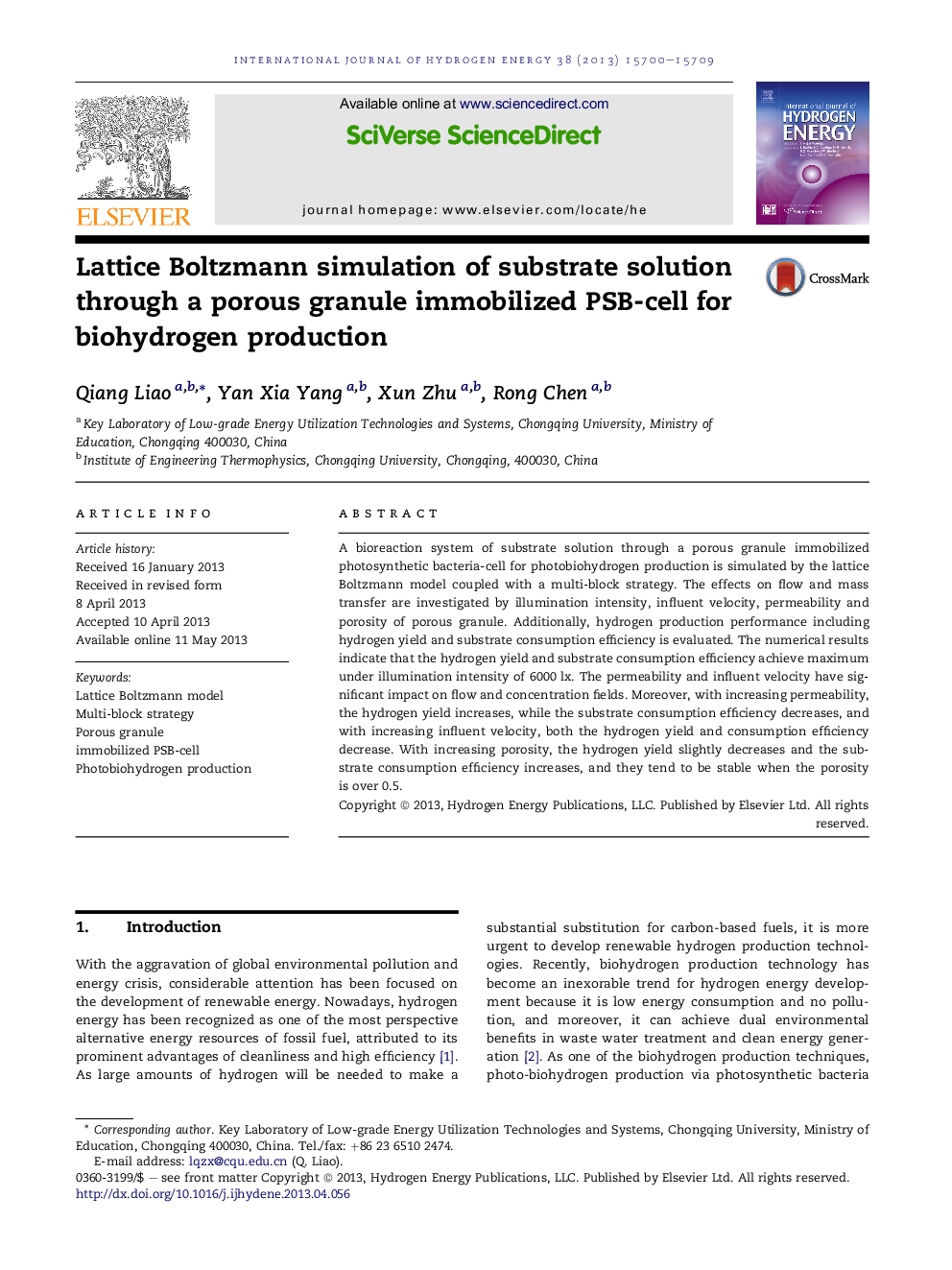| Article ID | Journal | Published Year | Pages | File Type |
|---|---|---|---|---|
| 7721638 | International Journal of Hydrogen Energy | 2013 | 10 Pages |
Abstract
A bioreaction system of substrate solution through a porous granule immobilized photosynthetic bacteria-cell for photobiohydrogen production is simulated by the lattice Boltzmann model coupled with a multi-block strategy. The effects on flow and mass transfer are investigated by illumination intensity, influent velocity, permeability and porosity of porous granule. Additionally, hydrogen production performance including hydrogen yield and substrate consumption efficiency is evaluated. The numerical results indicate that the hydrogen yield and substrate consumption efficiency achieve maximum under illumination intensity of 6000 lx. The permeability and influent velocity have significant impact on flow and concentration fields. Moreover, with increasing permeability, the hydrogen yield increases, while the substrate consumption efficiency decreases, and with increasing influent velocity, both the hydrogen yield and consumption efficiency decrease. With increasing porosity, the hydrogen yield slightly decreases and the substrate consumption efficiency increases, and they tend to be stable when the porosity is over 0.5.
Keywords
Related Topics
Physical Sciences and Engineering
Chemistry
Electrochemistry
Authors
Qiang Liao, Yan Xia Yang, Xun Zhu, Rong Chen,
